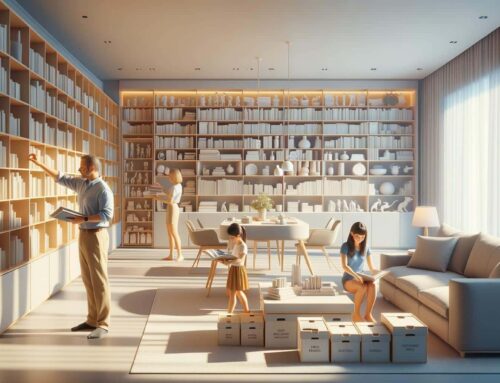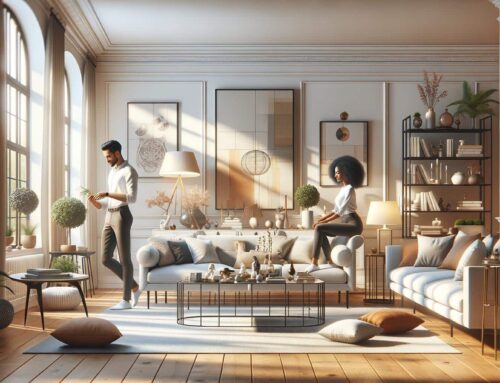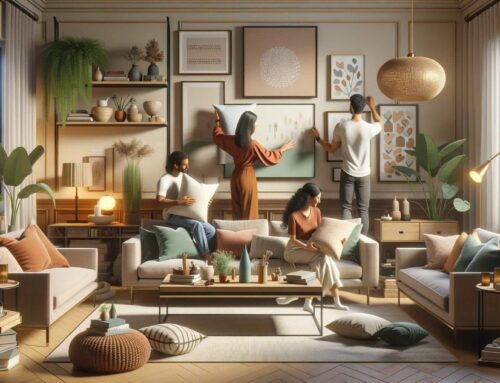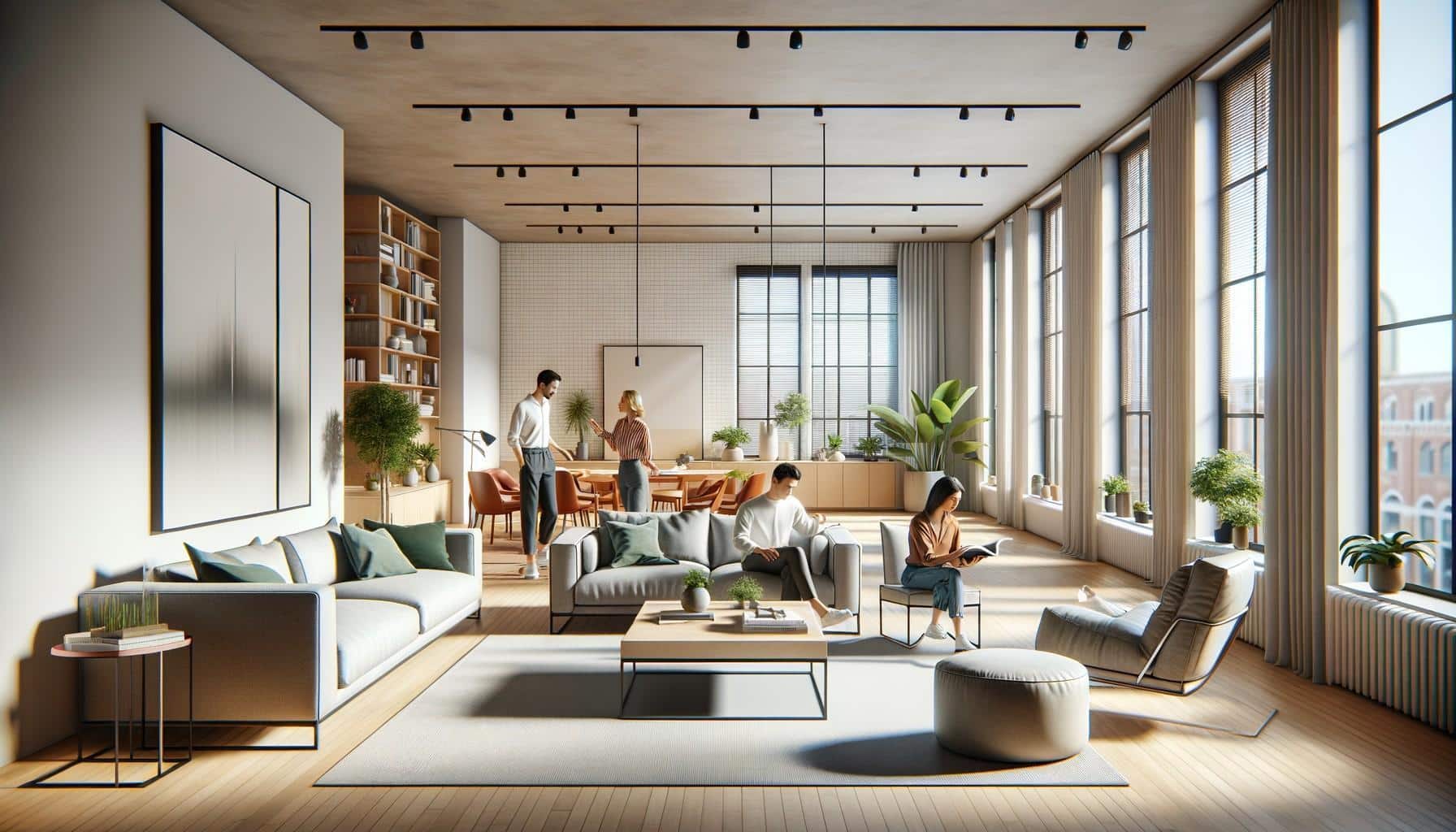
Professional interior design transforms any space into a stunning, functional home. Most homeowners think they need expensive consultants to achieve magazine-worthy results.
We at Home Owners Association know that’s simply not true. With the right tips for home interior design, you can create spaces that rival professional work while staying within your budget.
What Design Fundamentals Actually Matter
Colour psychology drives every successful interior design project. Research from Eva Heller shows that blues and greens create calm atmospheres, while warm yellows boost energy levels. The 60-30-10 rule works best for colour distribution: 60% dominant neutral, 30% secondary colour, and 10% accent shade. Test paint samples on walls at different times throughout the day because natural light changes how colours appear.
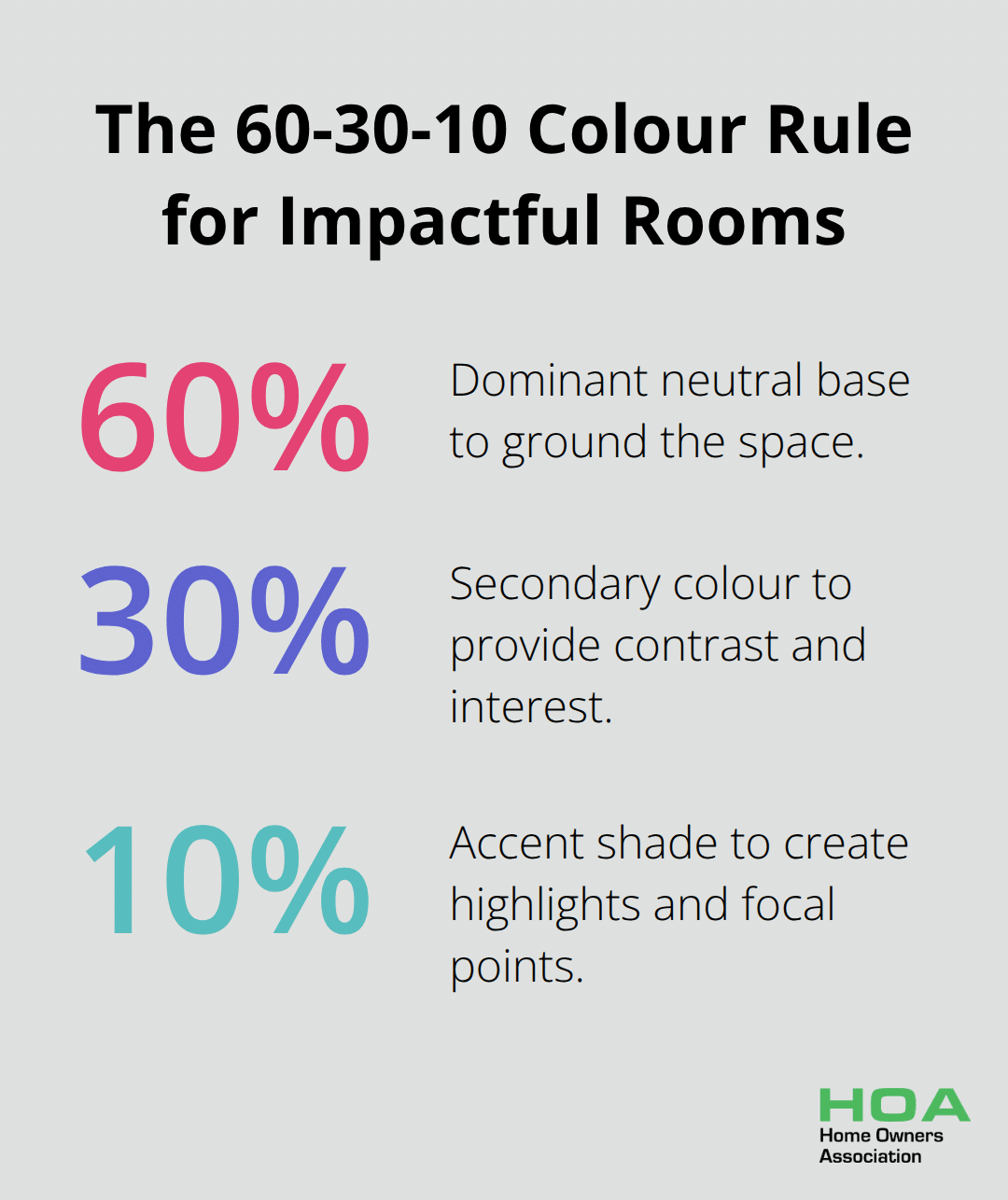
Morning light makes colours cooler, while evening light adds warmth.
Room Flow Creates Functional Spaces
Spatial planning starts with room measurements and scaled layouts before you purchase furniture. The global interior design market reached $136.12 billion in 2023, with successful projects that follow specific flow principles. Maintain 36 inches of walkway space between furniture pieces for comfortable movement. Position seats to face each other within 8 feet for easy conversation. Corner banquettes work perfectly in small spaces while they maximise seating capacity.
Lighting Layers Transform Any Room
Professional designers use three lighting types: ambient for general illumination, task for specific activities, and accent for visual interest. Layer these light sources to create depth and mood flexibility. Natural light should be maximised during daytime hours, then supplemented with artificial sources. Statement light fixtures serve dual purposes as functional elements and design focal points. Install dimmer switches on all overhead lights to adjust ambiance throughout the day.
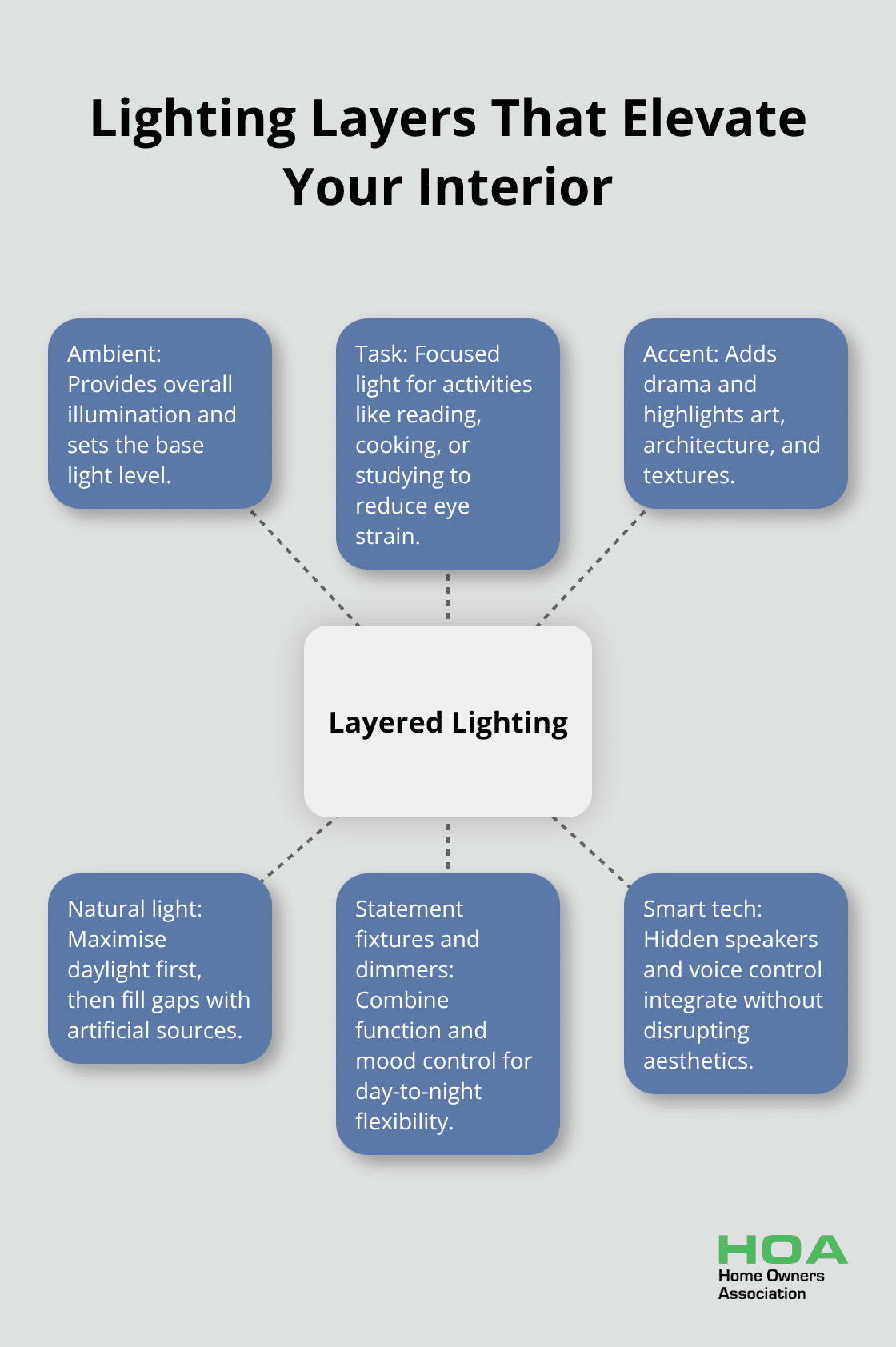
Hidden speakers and voice-controlled systems integrate technology seamlessly into modern homes without disruption to your design aesthetic.
Balance Principles Guide Professional Results
Symmetrical balance involves mirror effects (like identical lamps on either side of a bed), while asymmetrical balance offers a more relaxed arrangement. Radial balance focuses on focal points such as fireplaces, with surrounding items arranged evenly from the centre. Scale and proportion matter significantly-larger furniture suits spaces with high ceilings, while smaller pieces work better in compact areas. These fundamental principles set the foundation for your next design decisions about furniture selection and placement strategies.
How to Select and Arrange Furniture Like a Pro
Foundation furniture investment beats decorative purchases every time. Quality leather sofas and stain-resistant fabrics like Crypton or Sunbrella withstand daily wear from families and pets while they maintain professional appearance for years. The global furniture market generated USD 677,097.2 million in 2022, with successful designers who follow specific placement rules that maximise both function and style. Position sofas 36 inches from coffee tables and maintain 8-foot conversation zones between seating areas. Corner arrangements work better than floating furniture in most rooms because they create natural traffic flow patterns.
Texture Combinations Create Visual Depth
Professional designers layer three texture types per room: smooth surfaces like glass or metal, rough elements such as natural stone or woven baskets, and soft materials that include velvet cushions or wool rugs. Natural stone accents provide luxury touches with marble benchtops or granite fireplace surrounds that add substantial value. Mix organic materials like reclaimed wood with contemporary metals for authentic character. Avoid sources that come from single retailers because monotonous looks kill professional appeal. Artisanal handcrafted pieces support local craftspeople while they add unique personality that mass-produced items cannot match.
Statement Pieces Command Attention
Gallery walls transform multiple small artworks into singular focal points that rival expensive single pieces. Group odd numbers of items together because symmetry creates static arrangements that feel lifeless. Jewel tones like emerald and sapphire paired with metallic accents add opulence without they overwhelm neutral foundations. Statement light fixtures serve dual purposes as functional elements and conversation starters. Vintage and retro influences from estate sales or antique markets provide character at fraction of designer costs (often 60-70% less than retail). Pattern combinations work when consistent colour schemes connect different designs throughout the space.
Scale and Proportion Rules
Larger furniture suits spaces with high ceilings, while smaller pieces work better in compact areas. Match your living room seats to your dining room chairs to accommodate guests effectively. Oversized sofas and deep-seated chairs create casual comfort that defines modern relaxed spaces. Performance fabrics in high-traffic areas maintain the look of your upholstery despite inevitable spills and messes. Portable kitchen islands add warmth and unique character while they provide flexible storage solutions.
These furniture strategies set the foundation for smart shopping decisions that maximise your budget impact.
How to Get Professional Results on Any Budget
Smart shoppers time their purchases around major sales cycles. Memorial Day, Labour Day, and post-holiday clearances offer 40-70% discounts on quality furniture and decor. The global home decor market was valued at $747.75 billion in 2024, with retailers who compete aggressively during these peak periods. Estate sales and consignment shops provide authentic vintage pieces at 60-70% below retail prices. Thrift stores restock Wednesday through Friday mornings with the best selection available.
Quality leather sofas from estate sales often cost $300-500 compared to $2,000-3,000 retail prices. Check construction details: solid wood frames, eight-way hand-tied springs, and reinforced corners indicate professional-grade pieces worth the investment. These details separate quality furniture from mass-produced alternatives that won’t last.
Strategic DIY Projects Transform Spaces
Wallpapered ceilings create dramatic focal points for under $150 in materials while professional installation costs $800-1,200. Wood panelling accent walls with pre-finished planks cost $200-400 versus $1,500+ for contractor installation. Paint transformations deliver maximum impact for minimum cost: a gallon of premium paint covers 350-400 square feet and costs $45-65.
Gallery walls with thrift store frames painted in colours that match create custom artwork displays for $50-100 total. Performance fabric slipcovers extend furniture life while they cost $80-150 compared to $800-1,500 for professional reupholstery. Modular storage solutions from home improvement stores provide custom built-in looks at a fraction of carpenter costs.
Purchase Schedules Maximise Value
End-of-season clearances offer the deepest discounts: outdoor furniture drops 50-80% in August, while holiday decor reaches 70-90% off in January. Floor model sales at furniture showrooms provide 30-50% discounts on display pieces with minor wear. Online retailers clear inventory quarterly with flash sales that reach 40-60% off regular prices.

Subscribe to retailer newsletters for exclusive early access to sales events (many retailers send preview codes 24-48 hours before public sales). Warehouse clubs offer bulk purchase opportunities for items like candles, throws, and decorative accessories at 25-40% below retail. Factory outlet stores provide first-quality home goods at manufacturer-direct prices without middleman markups.
Final Thoughts
Professional interior design results come from mastering fundamentals rather than expensive purchases. Colour psychology, spatial planning, and layered lighting create the foundation for stunning spaces. Quality furniture placement following the 60-30-10 colour rule and proper scale relationships transforms any room into a magazine-worthy space.
The biggest mistakes homeowners make include purchasing everything from one retailer, ignoring room measurements, and buying decorative items before foundation pieces. Skip trendy pieces that won’t age well and avoid cramming too many small accessories into spaces. Test paint colours at different times before you commit to avoid costly repainting projects (morning light makes colours cooler while evening light adds warmth).
Start your design journey when you create mood boards and measure your spaces accurately. Focus on one room at a time rather than attempting whole-house transformations. These tips for home interior design work best when you apply them systematically with patience and planning. We at Home Owners Association support Melbourne homeowners with expert guidance for successful projects.

